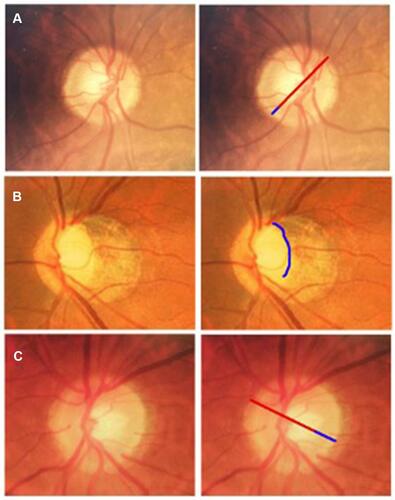Figures & data
Table 1 Summary of Studies Examining the DDLS Identified in the Literature Search
Figure 1 (A) Spaeth’s DDLS staging system stratified according to the optic disc sizes. Table reproduced from the Scottish Intercollegiate Guidelines Network (SIGN). Edinburgh: SIGN; 2015. (SIGN publication no. 144). [cited March 2015]. Available from URL: http://www.sign.ac.uk. These guidelines are licensed under the Creative Commons Attribution-Noncommercial-NoDerivatives 4.0 International Licence.Citation27 (B) Table of magnification correction factors to accurately calculate disc size.
![Figure 1 (A) Spaeth’s DDLS staging system stratified according to the optic disc sizes. Table reproduced from the Scottish Intercollegiate Guidelines Network (SIGN). Edinburgh: SIGN; 2015. (SIGN publication no. 144). [cited March 2015]. Available from URL: http://www.sign.ac.uk. These guidelines are licensed under the Creative Commons Attribution-Noncommercial-NoDerivatives 4.0 International Licence.Citation27 (B) Table of magnification correction factors to accurately calculate disc size.](/cms/asset/c205816a-a765-4b50-81c2-c476ed1a18af/doph_a_12177124_f0001_b.jpg)
Figure 2 Examples of DDLS gradings for 3 eyes, with small (A) and large (B and C) optic disc diameters. For example (A), the thinnest width of the rim is approximately 1/7th (0.14), the diameter of the optic disc in the same Meridian, which for a small optic disc, is equivalent to a DDLS of 3. For example (B), there is no rim over approximately 130 degrees, which for a large optic disc, is equivalent to a DDLS of 6. Care however must be taken in myopic eyes, to differentiate temporal sloping of the rim from absence of rim tissue. For example, (C), the thinnest width of the rim is approximately ¼ the diameter of the optic disc, which for a large disc is equivalent to a DDLS of 0b.

